This post may contain affiliate links. Please read our disclosure policy.
A quick and easy guide on how to make almond flour using just one ingredient and a few minutes, including a variety of uses and recipe suggestions.
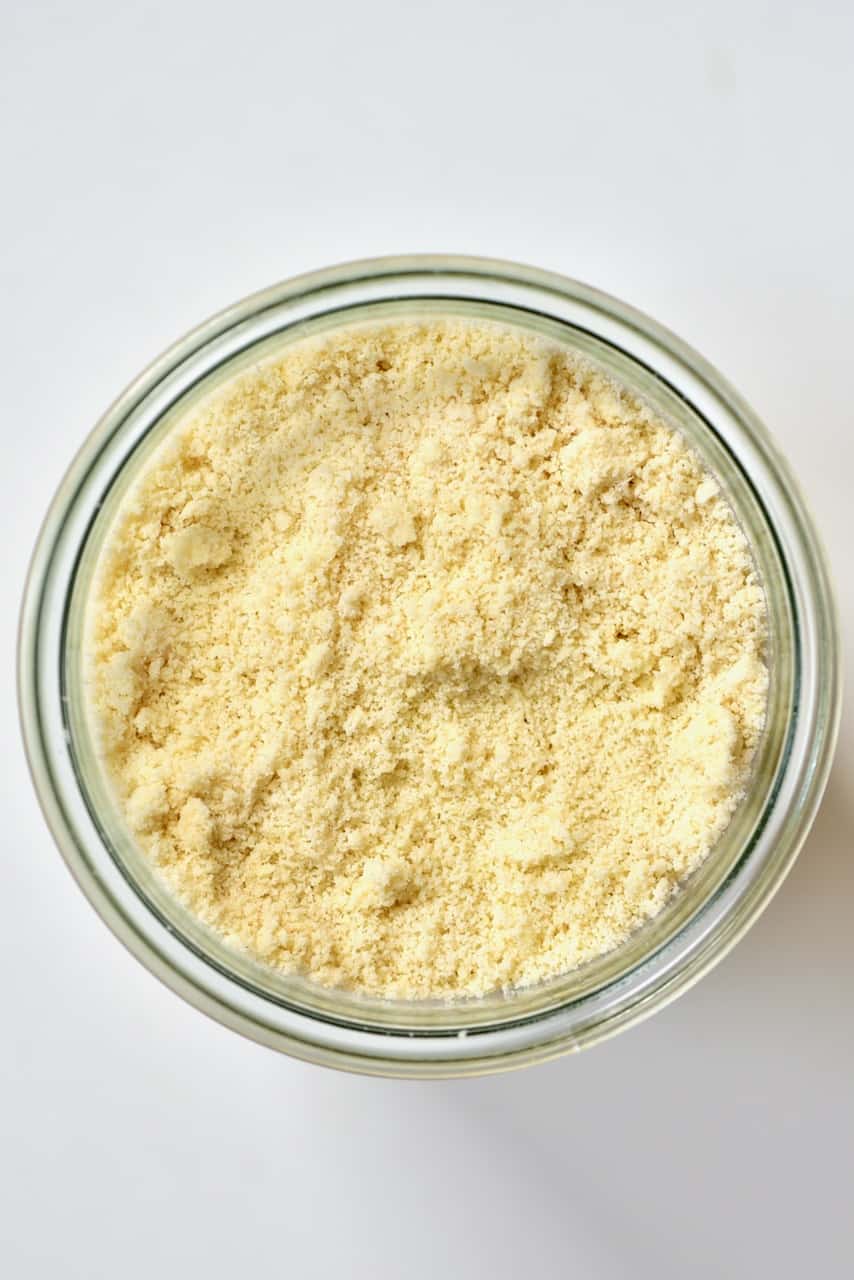
Learning how to make almond flour is super simple. All you need is a single ingredient, a high-speed blender, and a few minutes of your time. The resulting blanched almond flour can be used in tons of recipes and fits a variety of dietary needs. This includes being naturally gluten-free, paleo, and keto.
Plus, making this ingredient at home can work out far more cost-effective than purchasing store-bought almond flour repeatedly. I also find that it tastes fresher too!
Want to save this recipe?
What is almond flour & is almond flour gluten-free
Almond flour can be made in a couple of ways. However, it is usually blanched almonds that are ground down into a fine flour-like powder. This flour is gluten-free, Paleo, Keto, Whole30, and low-carb – so super dietary restriction friendly. In stores, it’s often labeled in a variety of ways, including almond flour, ground almonds, almond powder, almond meal (although we’ll discuss how that’s different below).
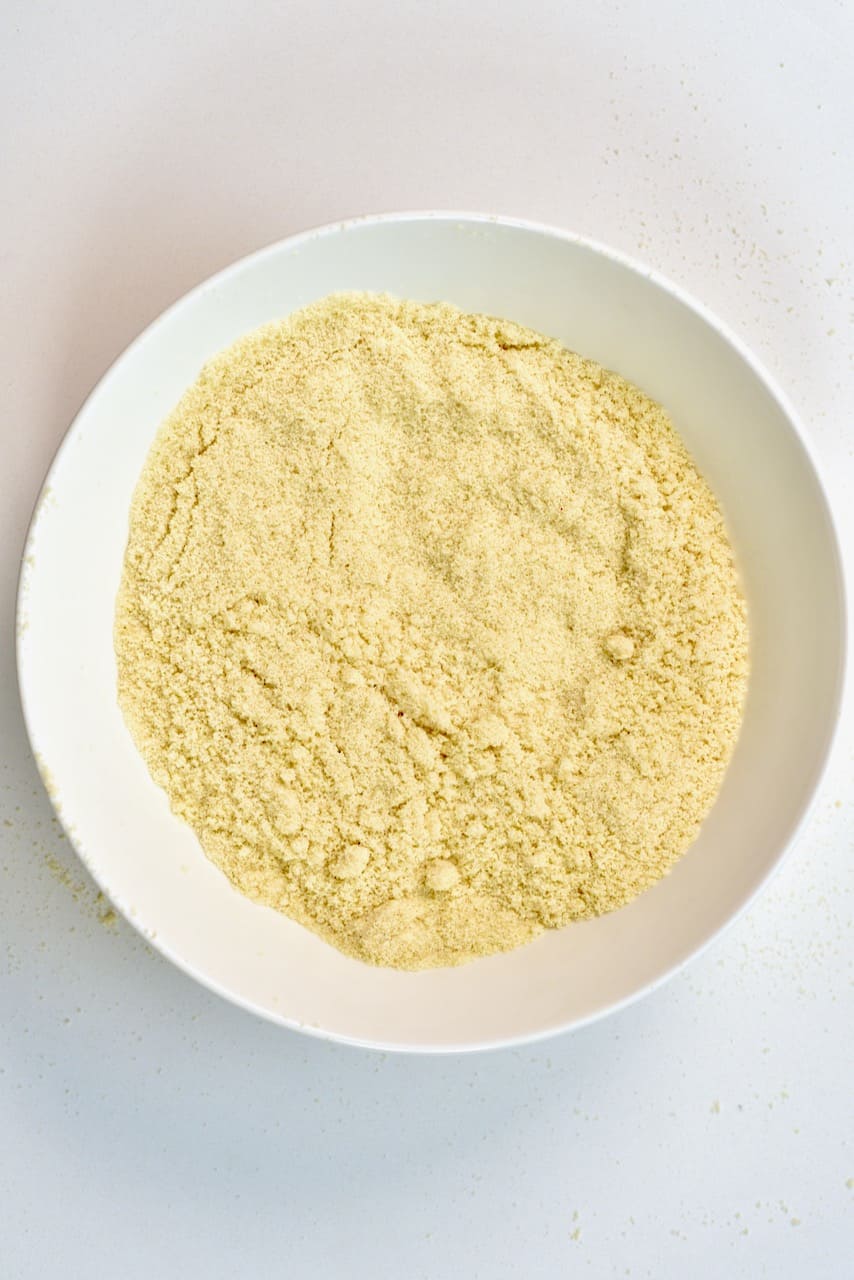
As an all-purpose flour substitute, almond flour can’t be used at a 1:1 ratio in all circumstances – this is something you’ll have to experiment with over time if recipes don’t state sub amounts. However, it is still an excellent flour alternative, making for moist, slightly denser, and nutty baked goods. It is also the base of a number of popular desserts, including macarons, cherry Bakewell tarts, and more.
Is almond meal the same as almond flour
I touch on this in my Almond Meal DIY – the answer is no. While they are both made from the same ingredient and practically the same process, the almond meal uses raw almonds (unpeeled). The resulting powdery substance has a different color and slightly different texture.
Almond flour is the most refined of the flour vs. meal vs. pulp (leftovers from the homemade almond milk process) and best used for baked goods where you want it to blend in more, be refined, and not have any ‘gritty’ almond texture.
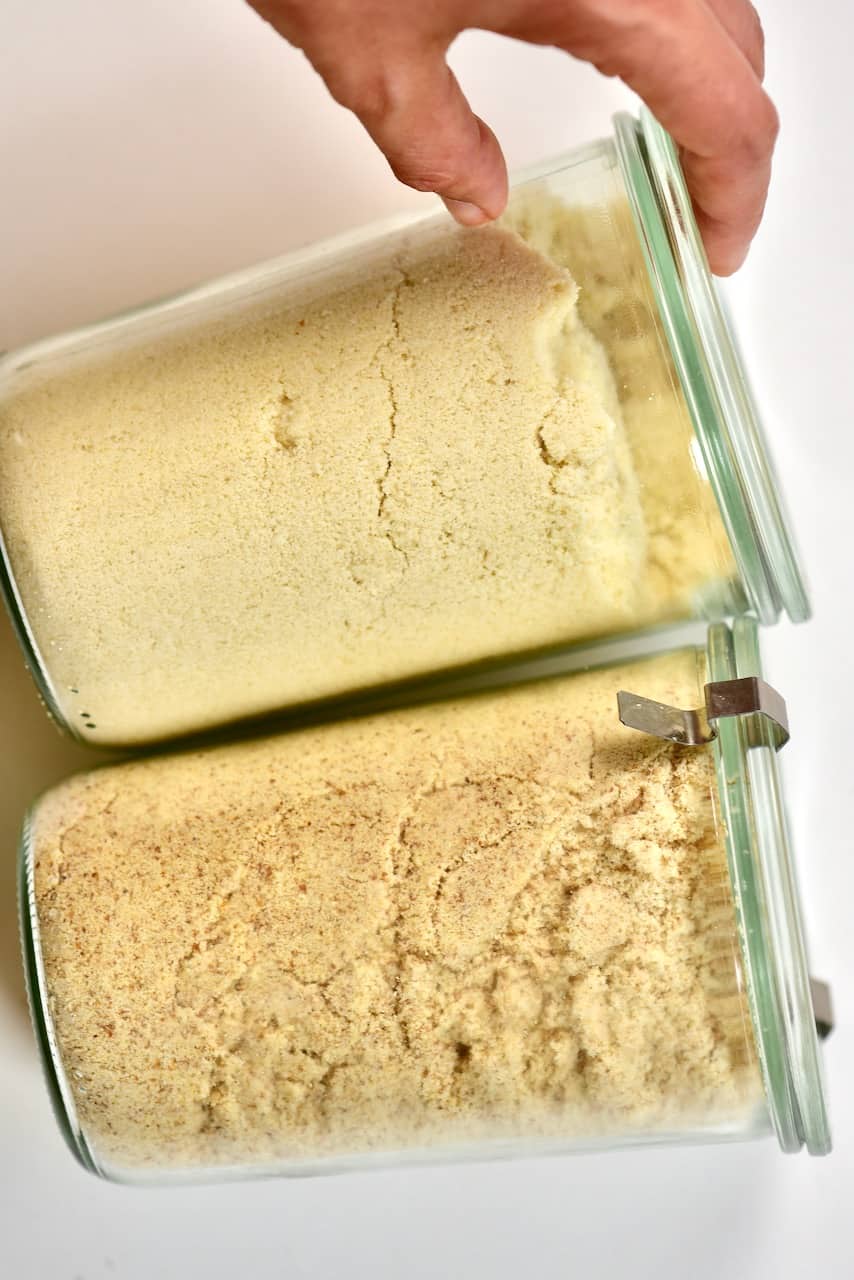
How to make almond flour
The process for making almond flour is almost identical to almond meal. However, the main difference is that before you grind the almonds, they need to be blanched and peeled as we don’t want the almond skins for this DIY.
You can also buy already blanched almonds. However, this will once again bump up the price. It’s a super simple process to do this at home so, why not.
You can follow the simple process of blanching almonds here.
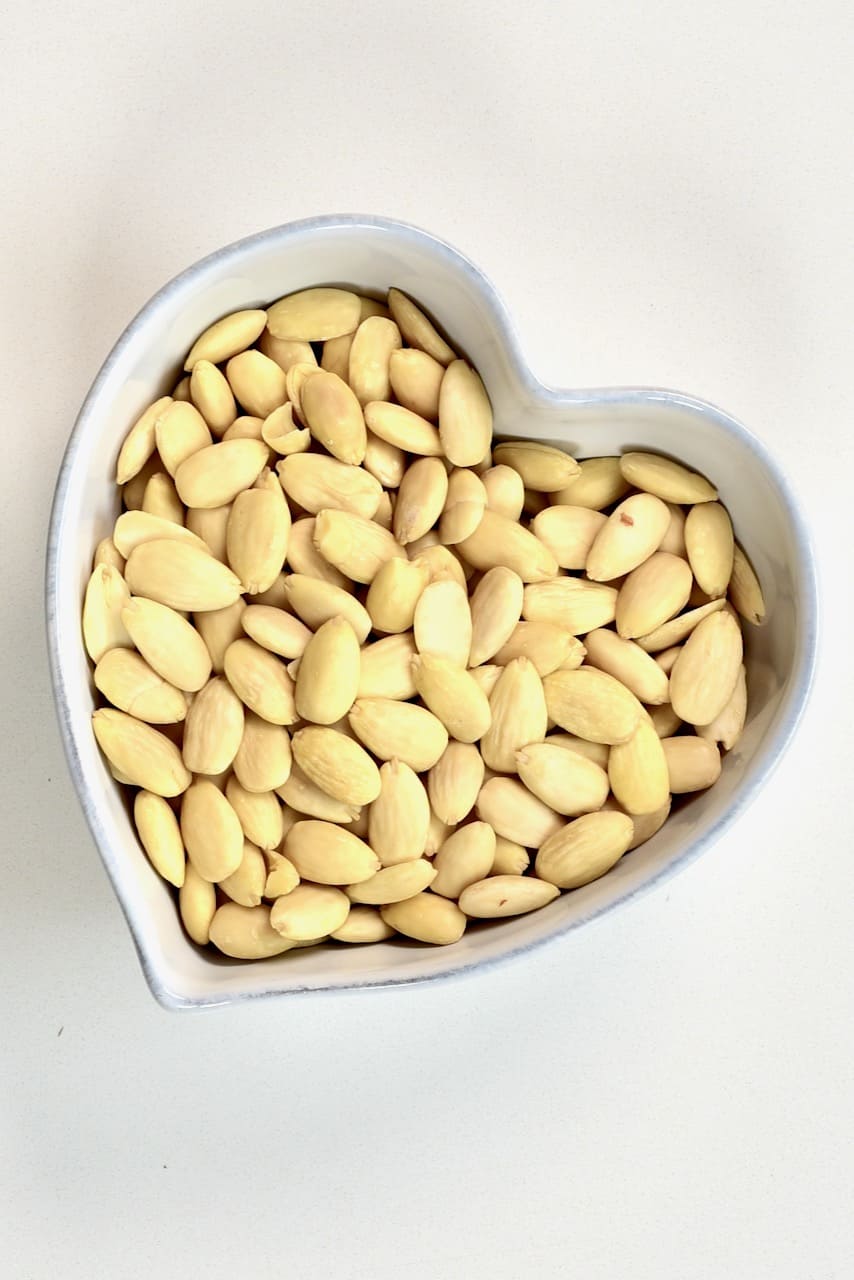
Once ready, the almonds just need to be placed into a high-speed blender and ground into a fine powder.
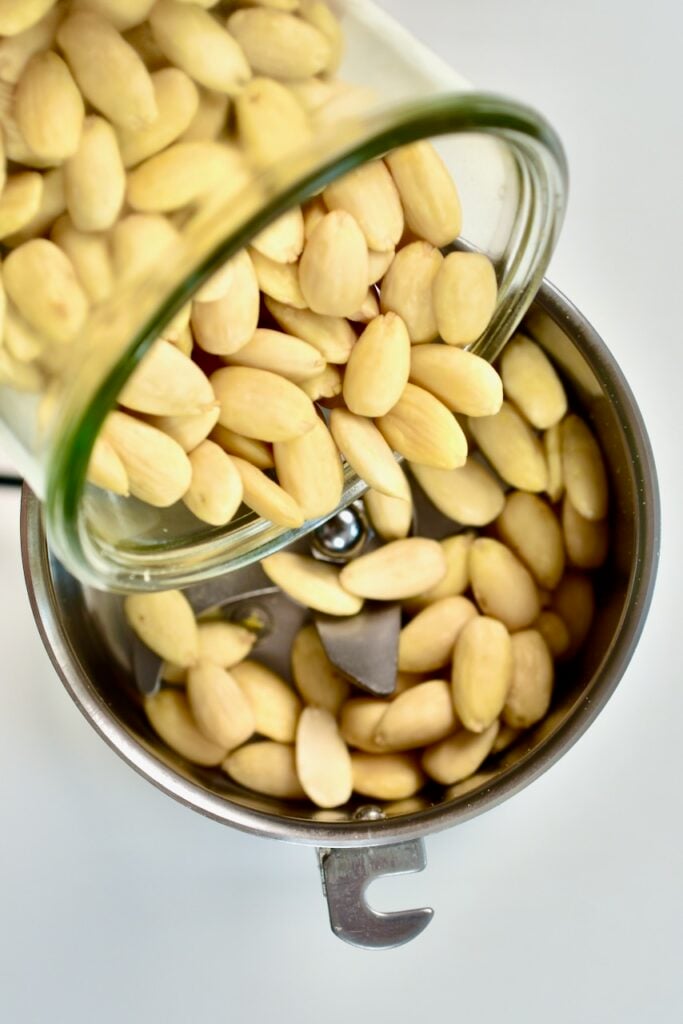
There’s a little more to it than that, though, so read the recipe card below for the full details and notes. I’ve also included notes on making this with a coffee grinder too. The key is to pulse the mixture, so you don’t end up with almond butter.

Recipes & uses
I have a variety of almond flour recipes here on the blog, including;
For crusts: As well as using it as a gluten-free alternative for regular pie crusts, I have a variety of tarts using a raw vegan tart base.
For Cookies & Cakes: There are tons and tons of ways to include this ingredient in your cookies and cakes. I have a few options here on the blog, including these Almond Pistachio Thumbprint Cookies Recipe, and Simple Gluten-Free Banana Bread Recipe.
Candy Bars: For example, in these vegan versions of popular candy bars. i.e., these Homemade snickers Bars (Vegan) and Vegan Twix Bars.
As I mentioned above, almond flour can also be used for classic dishes, including french macarons and cherry Bakewell tarts. It can also be used in place of bread crumbs as a topping and binder, i.e., for these Mushroom & Lentil Meatballs.
These are just a few suggestions for the hundreds of ways to use this ingredient. Muffins, brownies, cookies, cakes, pies, crackers – there are tons of ways to use almond flour. Let me know your favorite recipes using this ingredient in the comments below.
If you have any questions, leave a comment below. Also, I love seeing your recreations, so feel free to tag me on Instagram @AlphaFoodie.

How To Make Almond Flour (Cheaper than store bought)
Equipment
Ingredients
- 1.5 cup blanched almonds
Instructions
- Use blanched almonds (according to these instructions) and put them in a grinder/food processor. I've found that the blanched almonds to almond flour ratio is just under 1.5:1 i.e. 1.5 cups of almonds will make just under 1 Cup of almond flour.

- Pulse the almonds for 10-15 seconds at a time. In between pulses, shake up the blender to make sure the nuts are close to the blade again, then continue to pulse and pause/shake until the flour is ready. *

- Sieve the powder to collect any larger bits which you can then blend/grind again.

- Transfer into an air-tight jar/container. You can store this in the fridge for 1 month or the freezer for 3 months.

Video
Notes
Nutrition
Nutrition information is automatically calculated, so should only be used as an approximation.


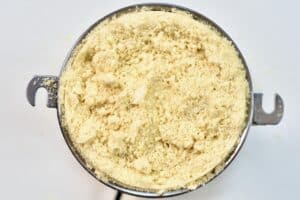
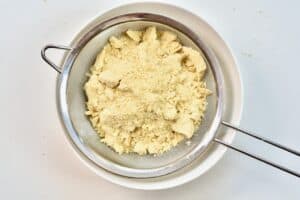
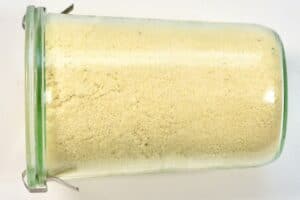









I have done the step before this and blanced the almonds first then proceeded with this recipe. They have both been so easy! Thank you for the amazing tips!